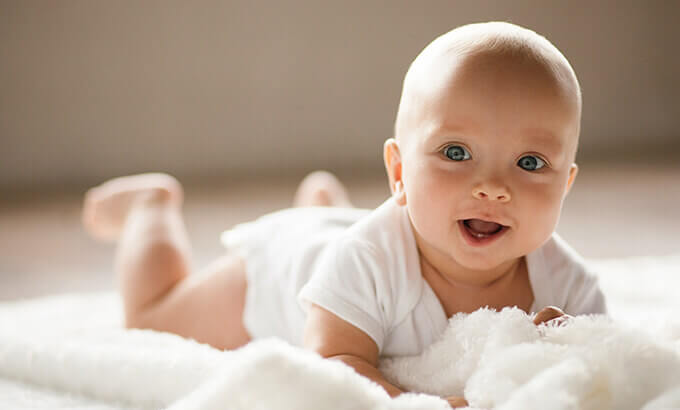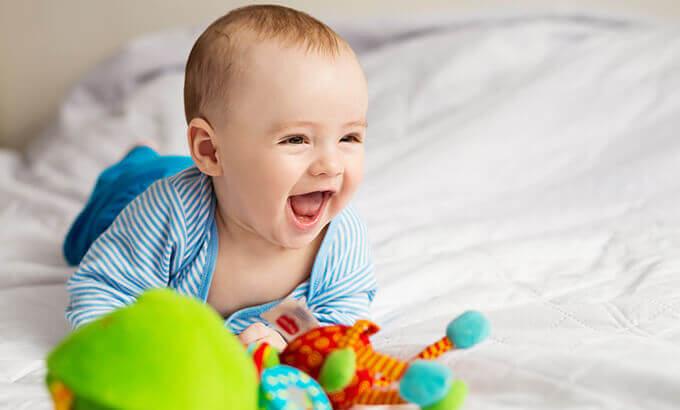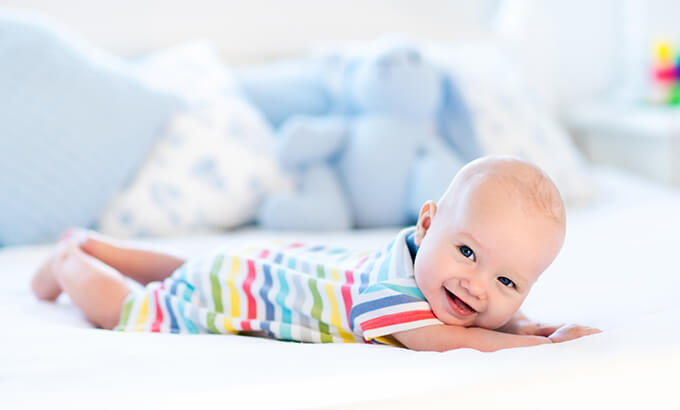The baby’s smile is one of the most rewarding moments, especially for first parenting. But when do babies smile? With your baby’s smile, you can learn about when her social and emotional development will begin.
Believe it or not, your baby was probably smiling long before she was born. Even in the womb, babies can smile very early in life, says pediatrician Mark Gettleman. Babies’ first smiles are not intentional or in response to anything. Dr Gettleman says your baby’s smile is similar to reflex arm or body movements. But very soon, you can see a real smile on your baby’s face that she made on purpose.

Development Types: Social, Visual, Emotional
The baby’s first real smile says a lot about her development. This is a sign that his vision has improved. He is aware that smiling is a way to connect with others if his brain and nervous system reflexes are mature enough. She begins to notice that her reactions and emotions have a direct impact on people, and so she uses smiles to express pleasure, excitement, satisfaction, and happiness. You can tell by his smile: ”Mom, you did a great job! ” or “This milk is great, I want some more!”

She starts smiling when you wait
The baby’s reflex smile disappears by the time he is 2 months old, and by the time he is 3 months old, you can now see him with a real smile. The difference between smile duration and reflex and a real smile can be said. Your baby usually smiles reflexively when she’s asleep or tired because her smile tends to be shorter at this time, which happens randomly. On the other hand, after seeing his mother’s face or hearing his brother’s shrill voice, you can see an expression of emotion on their faces in response and that they are consistent.
If you’re still waiting to see your baby’s smile, there are some things you can do to encourage it. Such as making frequent eye contact and smiling at her throughout the day, talking to her often, making funny facial expressions or imitating animal sounds and behaviors by making sounds, or blowing on your baby’s belly. Simply don‟t go overboard. David Elkind, child psychologist, Ph.D., author of Go Parenting, said: “If you give too much stimulation as babies develop the ability to regulate their emotions, you may seem distant to them, give the little one some space and try again later.
Try again and again the action that she reacts to after her first smile. His vision develops only by seeing the faces of two people he loves. Later on, it will be enough for you and your partner to give him a smile. It may take some time for your baby to smile at other people because their reactions to strangers kick in at about 6 months of age. Seeing people’s reactions allows your baby to enjoy laughing more. Dr. “Your baby will start laughing with little giggles at first, and the 5-month-old baby may excite and surprise you by laughing outwards with her belly,” Gettleman says.

Red Flags to Watch Out For
Although your baby may have started smiling early on, sometimes it’s possible to see that he isn’t smiling, and that doesn’t always mean that he’s anxious, unhappy, or that something is wrong. This milestone of babies is also different from each other, and for some, it may take an extra few weeks. However, if your baby is 3 months old and still not smiling, you need to consult a pediatrician.
